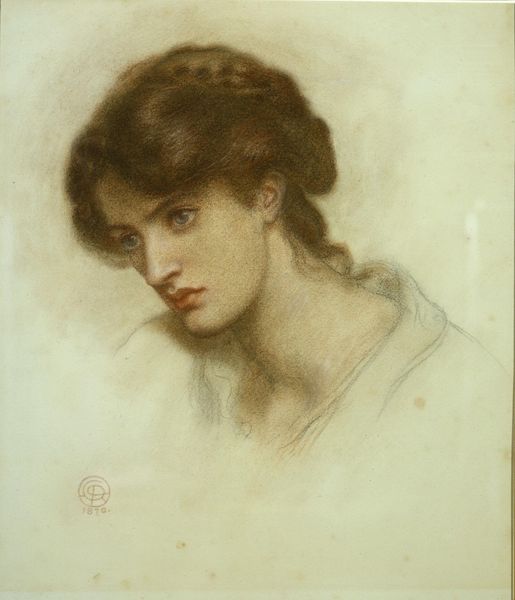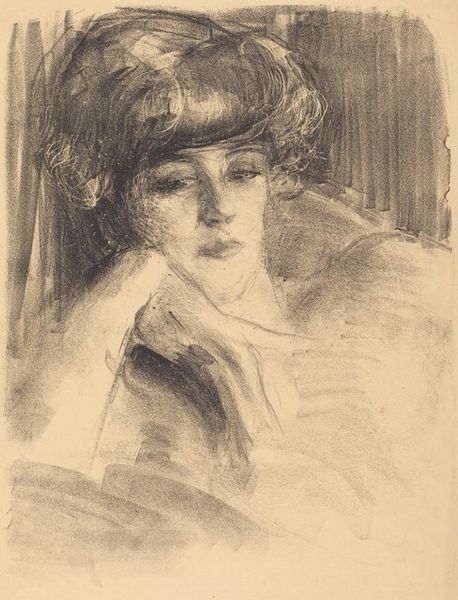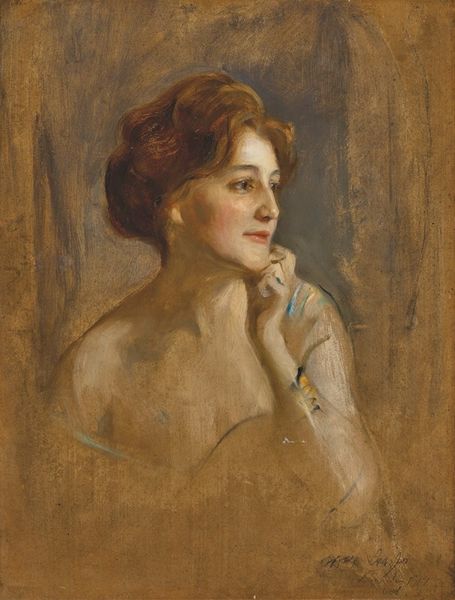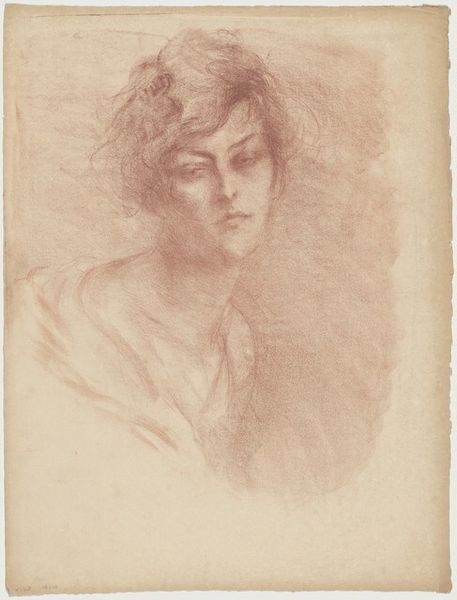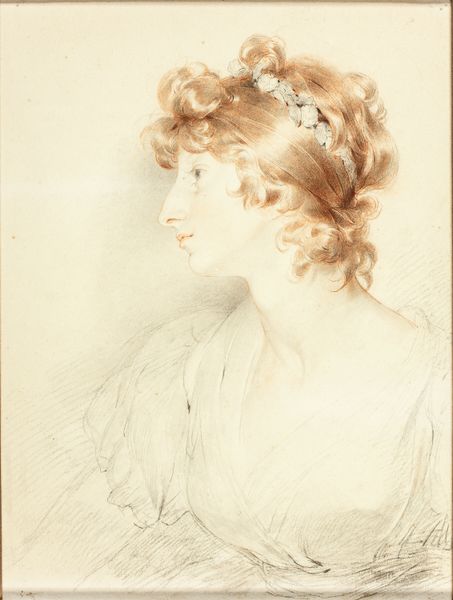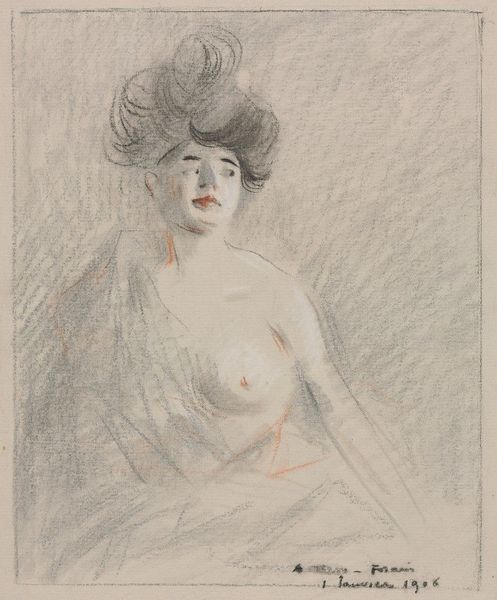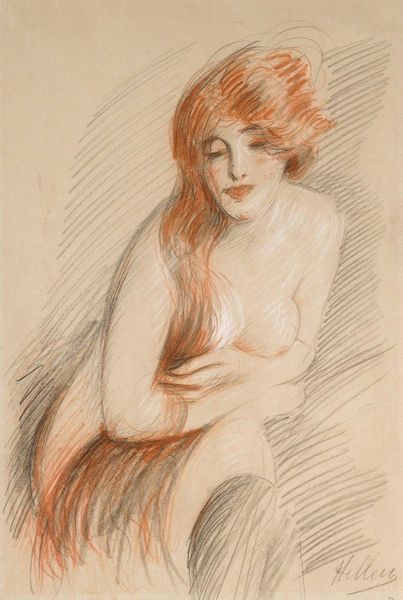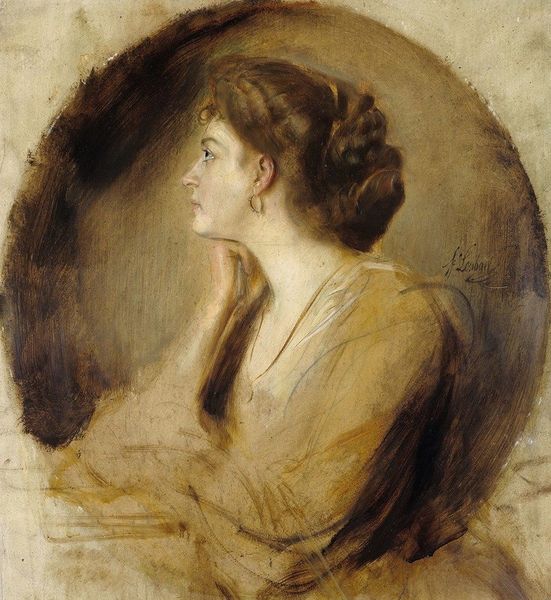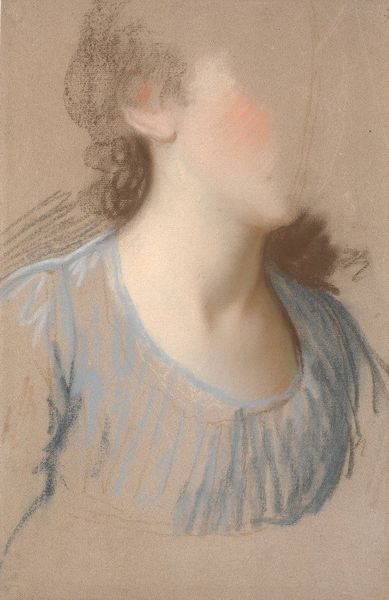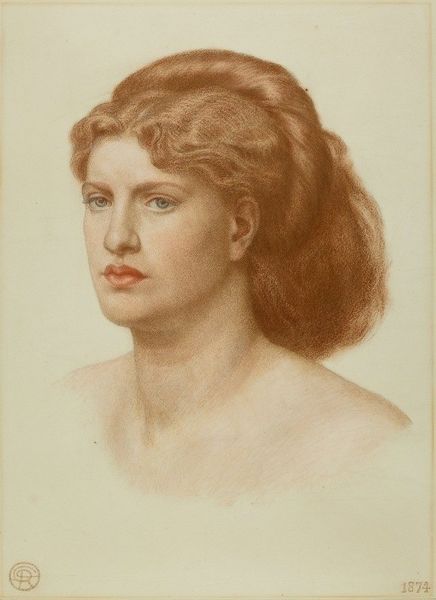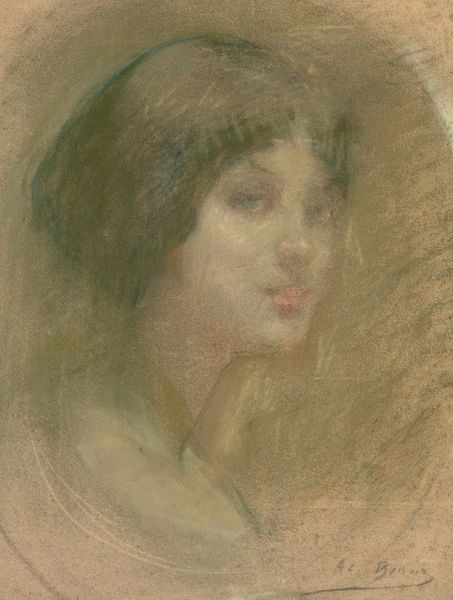
drawing, pastel
#
portrait
#
drawing
#
art-nouveau
#
charcoal drawing
#
intimism
#
portrait drawing
#
pastel
Copyright: Public domain
Editor: This is Gerda Wegener's "Model with Fan and Shawl," a drawing from 1919 rendered in pastel and charcoal. There's a quiet intimacy to the work. What social currents do you see reflected in this piece? Curator: The timing of this work, 1919, places it right after the devastation of World War I. How do you think the public role of women and their portrayal in art changed during and after that period? Consider also Wegener’s other, more provocative, work depicting gender fluidity. Does this intimate portrait seem to engage in, or perhaps retreat from, that public discourse? Editor: I suppose the retreat. It feels… personal, even domestic, and therefore almost resistant to any major political statement. Curator: Precisely! And it is a charged move. Consider the prevalence of the ‘New Woman’ in art and media of the time – a figure celebrated and scrutinized. A work like this, focused on interiority and subtle elegance, carves out a different space. Wegener was working within a Parisian art world that was actively shaping and being shaped by changing social mores. So, is it merely a beautiful portrait, or is it making a comment by choosing a different path? Editor: So the choice *not* to portray the “New Woman” *becomes* a statement itself about the place of women. I hadn't considered that negative space, so to speak, could speak so loudly. Curator: Exactly. Think about how art galleries and public opinion shaped artistic careers and dictated which voices were amplified. Even an image as seemingly quiet as this one participates in that negotiation of power and visibility. What will you think of when you see another work from this period? Editor: I'll definitely be paying more attention to who isn't being represented and what that absence signifies! Thank you.
Comments
No comments
Be the first to comment and join the conversation on the ultimate creative platform.
